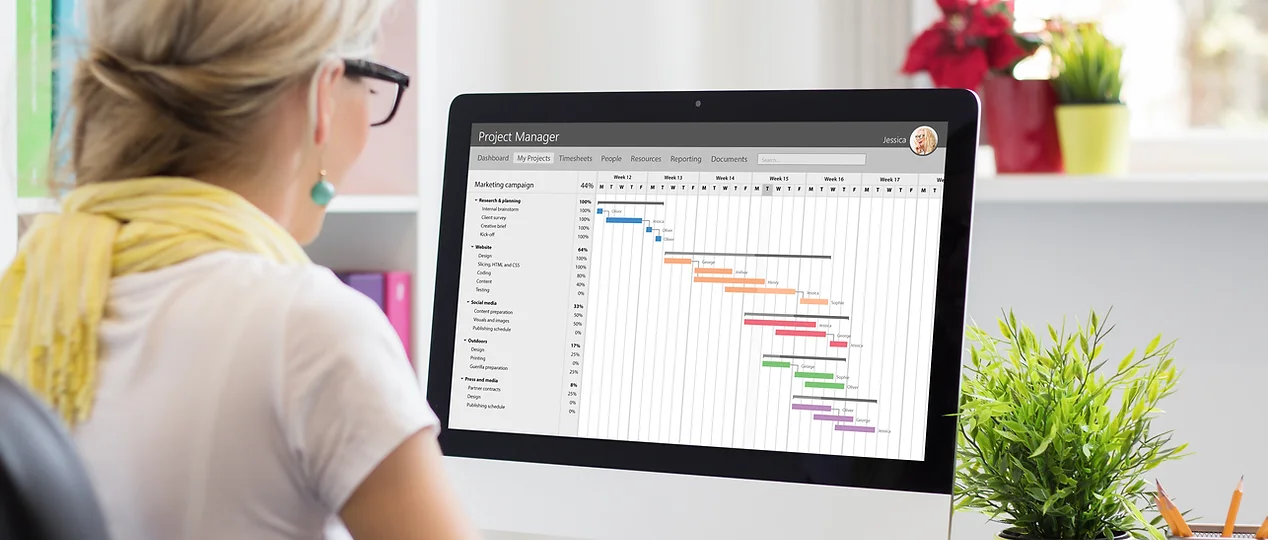How to make a Gantt chart with Google Sheets

In the realm of project management, Gantt charts are invaluable tools for visualizing timelines, tracking progress, and enhancing overall project organization. Google Sheets, a versatile cloud-based spreadsheet application, offers a user-friendly platform for creating dynamic Gantt charts that cater to your project management needs.
How a Gantt Chart Can Help You with Your Projects
Efficient Time Management
Gantt charts provide a clear and visual representation of project schedules. With tasks laid out in a timeline format, you can easily identify dependencies, allocate resources, and allocate time efficiently.
Real-Time Monitoring
One of the key advantages of using Google Sheets for Gantt charts is the ability to collaborate in real time. Multiple team members can access and update the chart simultaneously, ensuring everyone stays on the same page with the latest project developments.
Comprehensive Project Overview
A Gantt chart is like a roadmap for your project, allowing you to see the big picture while keeping an eye on the details. This comprehensive view helps in anticipating potential bottlenecks, managing resources effectively, and making informed decisions to keep your project on track.
Benefits of Gantt Charts
Visual Clarity
Gantt charts offer a visual representation of tasks and their timelines, making it easy for project managers and team members to grasp the project’s progression at a glance. Color-coded bars help differentiate between tasks and understand their statuses.
Improved Communication
When working on a project with multiple team members, clear communication is key. Gantt charts provide a visual reference that everyone can understand, facilitating better communication and reducing the risk of misunderstandings.
Effective Planning and Scheduling
Gantt charts enable you to plan and schedule tasks more effectively by highlighting dependencies and deadlines. This proactive approach helps in avoiding delays and ensures a smoother project flow.
Who Should Use Gantt Charts?
Gantt charts are not exclusive to a particular industry or role. Whether you are managing a construction project, organizing an event, or overseeing software development, Gantt charts can be customized to suit your specific needs. Project managers, team leaders, and individual contributors can all benefit from the insights and organization that Gantt charts provide.
Examples of Gantt Charts
To further illustrate the versatility of Gantt charts, here are a few examples of industries and projects where they are commonly used:
- Construction projects
- Event planning
- Product development
- Marketing campaigns
How to Make a Gantt Chart with Google Sheets
Creating a Gantt chart in Google Sheets is a straightforward process. Follow these steps:
- Open Google Sheets:
- Log in to your Google account and open Google Sheets.
- Enter Data:
- Create a table with columns such as Task Name, Start Date, End Date, and Duration.
- Insert Bar Chart:
- Select the data, go to the “Insert” menu, and choose “Chart.” Set the chart type to “Stacked Bar Chart.”
- Format the Gantt Chart:
- Customize your Gantt chart by adjusting the colors, labels, and other formatting options.
- Add Milestones:
- Include important milestones by adding vertical lines to the chart for significant project events.
- Share and Collaborate:
- Share the Google Sheets document with your team for real-time collaboration.
Other Tools to Create a Gantt Chart
While Google Sheets is a powerful tool for creating Gantt charts, there are other specialized project management tools that offer additional features. Some popular alternatives include:
- Microsoft Excel
- Trello
- Asana
- Smartsheet
How to Use Gantt Charts
Gantt charts are most effective when used as dynamic documents that are regularly updated to reflect the project’s current status. Here are some tips for utilizing Gantt charts effectively:
- Regular Updates:
- Keep the Gantt chart up to date by regularly entering progress and adjusting timelines as needed.
- Communication:
- Share the Gantt chart with the team and stakeholders to ensure everyone is aware of the project’s status and upcoming milestones.
- Resource Allocation:
- Use the Gantt chart to manage and allocate resources efficiently, ensuring that tasks are assigned based on priority and dependencies.
- Adaptability:
- Gantt charts should be adaptable to changes in the project. Be prepared to adjust timelines and dependencies as the project evolves.
In conclusion, Gantt charts are invaluable tools for project and time management, and Google Sheets provides an accessible platform for creating and collaborating on these useful charts. By incorporating Gantt charts into your project management toolkit, you can enhance communication, improve planning, and achieve greater success in your endeavors.




